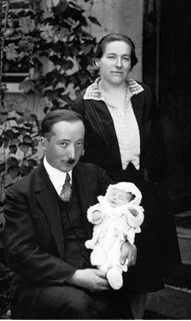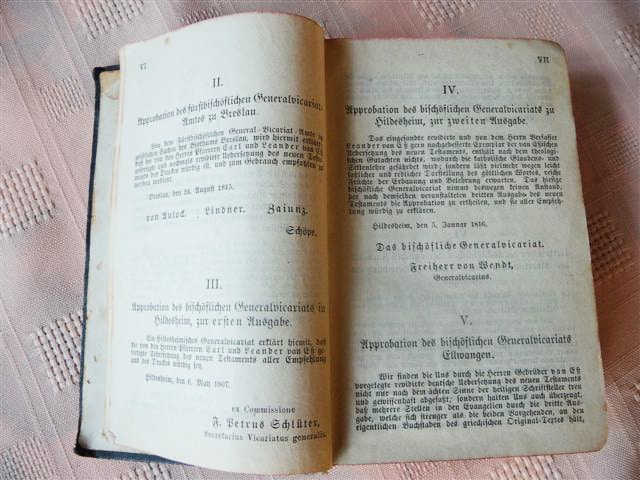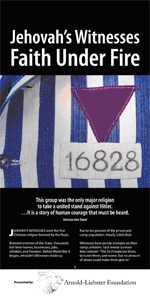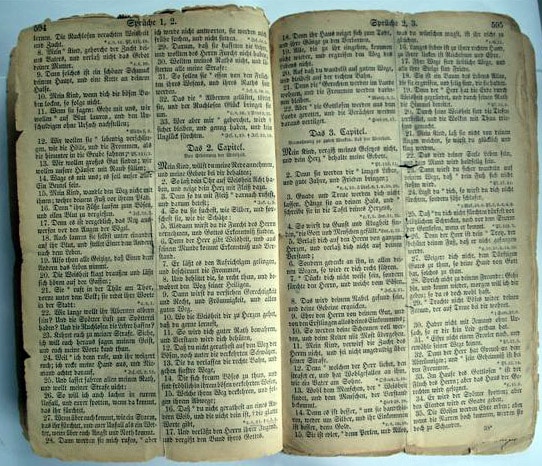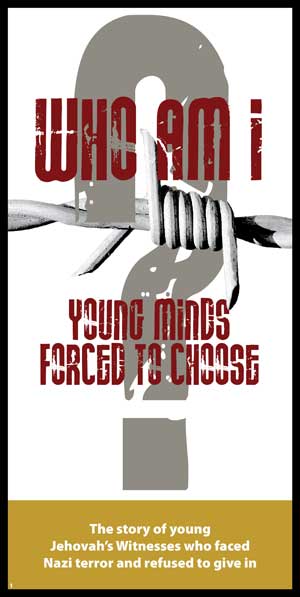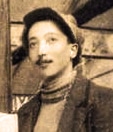>>> Download Visitor Information <<< A talented artist, Adolphe Arnold and his wife Emma embraced the faith of Jehovah’s Witnesses. They raised their daughter Simone with a strong sense of justice and deep desire to please God by their words and actions. After the Nazi occupation of France in 1940,
Under the Nazi regime, one of the favored methods of controlling people was to ban, confiscate and/or destroy any type of media that was considered a threat to their power. In July 1935 and January 1936, police were instructed to confiscate all literature, including Bibles, and to take action against
This tiny Bible measures 3.5” x 5” and is 1” thick. The Leander van Ess Catholic version of the Bible contained only the Christian Greek Scriptures and the Psalms. Hidden by her mother in a sewing box with a false bottom, it traveled with 12-year old Simone Arnold when she
Jehovah’s Witnesses—Faith Under Fire premiered at Florida Holocaust Museum. 12 panels created by the Arnold-Liebster Foundation chronicle the Nazi persecution of Jehovah’s Witnesses and the Witnesses’ nonviolent resistance to Nazi terror inside and outside the camps. As historian John Toland wrote, this is “a story of human courage that must be
The Bible played a key role in the spiritual resistance of Jehovah’s Witnesses. Viewing it as the greatest treasure, Adolphe and Emma Arnold found it to be a source of strength while they were imprisoned. When in Dachau, Adolphe became so distressed by the news that his wife and daughter
Who Am I? Young Minds Forced to Choose premiered at Los Angeles Museum of the Holocaust. Created by the Arnold-Liebster Foundation, this compelling exhibit of 13 framed panels examines the lives and experiences of young Jehovah’s Witnesses who suffered due to their refusal to accept Nazi ideology. Includes educational activities for
This compelling exhibit examines the lives and experiences of young Jehovah’s Witnesses who suffered due to their refusal to accept Nazi ideology. Simone and Rudolf, two young, persecuted Jehovah’s Witnesses, narrate the stories of their families and friends. Each panel heading poses a probing question for young viewers. Short, true-life accounts show
This exhibit showcases the relatively unknown story of suffering and hardships endured by Jehovah’s Witnesses in Nazi Germany. This small group was quickly thrust into the firestorm of Nazi terror, where through their unrelenting propaganda and pressure, male and female Witnesses, young and old, had to make a firm stand
On a frigid winter day in 1941, a transport truck left Schirmeck for Dachau concentration camp. Among the five Jehovah’s Witness prisoners were Adolphe and the elderly presiding minister of Mulhouse named Huber. An SS guard looked at the white-haired man, pointed to the crematorium chimney, and screamed, “This will
